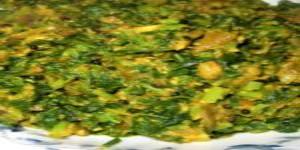
Scope
A key ingredient, used in most dishes in a variety of ways across the subcontinent is the humble, brown, pulpy tamarind. Variously called Imli (Hindi & Punjabi), Puli (Tamil & Malayalam), Chintha pandu (Telugu), Huli (Kannada), Amli (Gujarati), Tetul (Bengali), Chinch (Marathi), Tentuli (Oriya) 10 , it is savoured for its sweet, sour, tangy taste and is used in many
dishes in the Bhaga Shastra. Today, India is the largest producer of tamarind.The consumption of tamarind is widespread due to its central role in the cuisines of the Indian subcontinent, Southeast Asia, and the Americas, especially Mexico.
The tamarind tree produces a pod-like fruit that contains a brown, edible pulp. The pulp is also used in traditional medicine and as a metal polish. The tamarind’s tender young leaves are used in Indian cuisine, especially in Andhra Pradesh and Telangana. Because tamarind has multiple uses, it is cultivated around the world in tropical and subtropical zones. The fruit is best described as sweet and sour in taste, and is high in tartaric acid, sugar, B vitamins, and, unusually for a fruit, calcium.
Tamarind paste has many culinary uses including a flavoring for chutnies, curries, and the traditional sharbat syrup drink. Tamarind sweet chutney is popular in India and Pakistan as a dressing for many snacks. Tamarind pulp is a key ingredient in flavoring curries and rice in south Indian cuisine, in the Chigali lollipop, and in certain varieties of Masala Chai tea. Throughout Southeast Asia, the fruit of the tamarind is used as a poultice applied to foreheads of fever sufferers and has laxative effects due to its high quantities of malic acid, tartaric acid, and potassium bitartrate. Its use for the relief of constipation has been documented throughout the world. The Bhaga Shastra is filled with recipes that use tamarind as an essential ingredient, as the long list of the recipes below will show.
Fundamental Concepts and Principles
Fenugreek Seeds – 1 palam
Sesame Oil – ¼ palam
Pure Water – ½ padi
Tamarind – 1½ palam
Salt – ¾ palam
Curry Powder – ½ palam
Jaggery – ? palam
Rice Flour – ¼ palam
Oil or Ghee – 1 palam
Red Chillies – ? palam
Mustard Seeds – ? palam
Turmeric Powder – ? r.e
Asafoetida – veesam 1/16 r.e
Method
Largely, tamarind pulp is used in Bhaga Shastra cooking. For the purpose, ripe or ready tamarind is soaked in hot water and allowed to rest for a while. The pulp is extracted by squeezing them between one’s fingers and separating the seeds and residue from it. The resulting pulp is then strained and used in the dishes. However, tamarind can be used as is when ground to a paste in chutneys, and the like.
http://www.foodofy.com/tamarind.html
https://en.wikipedia.org/wiki/Tamarind
http://www.foodofy.com/tamarind.html
https://en.wikipedia.org/wiki/Tamarind
Method
1. Take fenugreek seeds and fry it in sesame oil. Add pure water with tamarind and remove the seeds from it.
2. Crush the tamarind and dissolve it and add salt, curry powder, jaggery and rice flour. Mix well. Pour oil or ghee in a lead coated vessel and heat it.
3. Remove the stems from the red chillies and add it to the ghee. After the chillies are half fried, add mustard, fried fenugreek seeds and turmeric powder to the seasoning.
4. Pour the tamarind juice mixture in it. Boil this until the gravy becomes thick. Dissolve asafoetida in water and pour it in the curry.
Hindu Compliance Body
The Hindu compliance body was established under the executive order of The Supreme Pontiff of Hinduism, dated August 14, 2020, order number 10010, under the title Reviving the Hindu Compliance System and Body
to create, promote, spread and teach the standard procedures for all products and services that are in compliance Hindu Shastras.
Copyright
HCS has the copyright of all its publications. No part of these publications may be reproduced in any form without the prior permission in writing to HCS. This does not preclude the free use, in the course of implementing standard, of necessary details mentioned above. Enquiries related to copyrights to be addressed to KAILASA.
